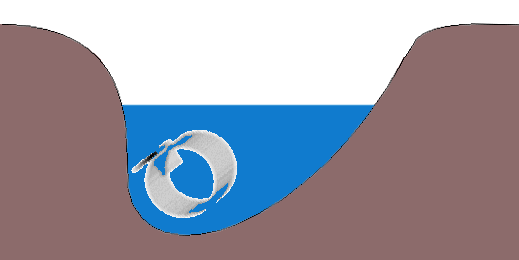




 EROSION
EROSION
Bed, banks and load
can be worn down (eroded) in a number of ways.
Attrition
(When the particles
collide and break each other into smaller fragments)
- Occurs at all
levels, ie large loads and small particles.
- Turbulent flow
will increase the amount of erosion by attrition, due to
higher likely hood of collision.

Hydraulic Aciton
(When the water wears
away the bank, leading to undercutting and collapse)
- Often on the
outside of bends where velocity is highest.
- Higher velocity
leads to higher rate of erosion.
- Turbulant flow
will increase erosion from hydraulic action.
- Air forced into cracks of banks, exapand and explode, leading to further break down.

Abbrasion
(When particles are
ground along the bed and banks, gradually wearing them away.)
- Usually occurs at
highest levels in storms.
- Abbrasion is high
if river contains high sediment load, and travels at high
velocity.
Corrosion
(Acidic content of the
water wears away the channel, similar to Chemical
weathering.)
- Acid from
pollutants or humic acid.
- Unaffected by
velocity or sediment load, as this is caused by the
soluble load, which can be transported with almost zero
energy.
- High
concentration of acid will increase rate of erosion.
{ Main Page | Weathering |Riffles and Pools| Transport }






![]()
![]()
![]()
![]()
![]()
![]() EROSION
EROSION 

![]()
![]()
![]()
![]()
![]()
![]()